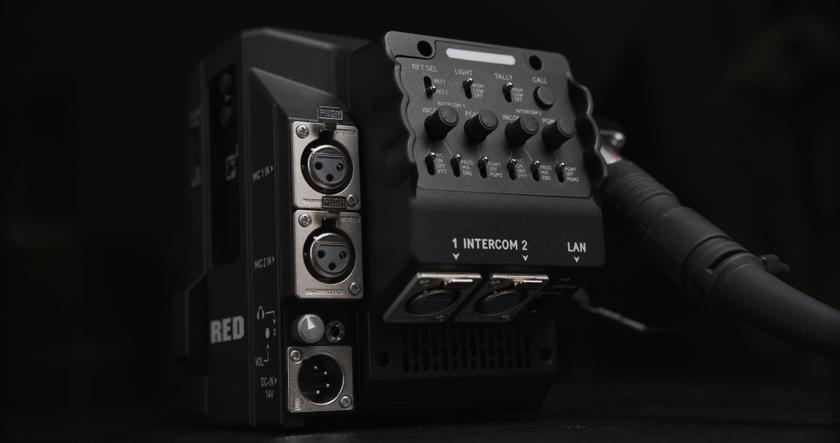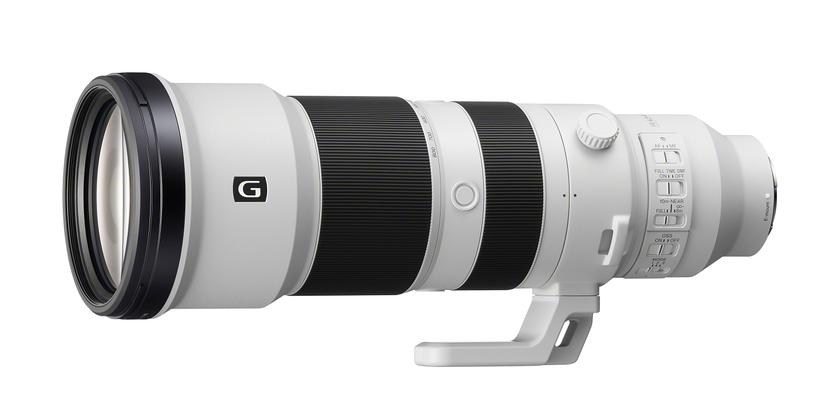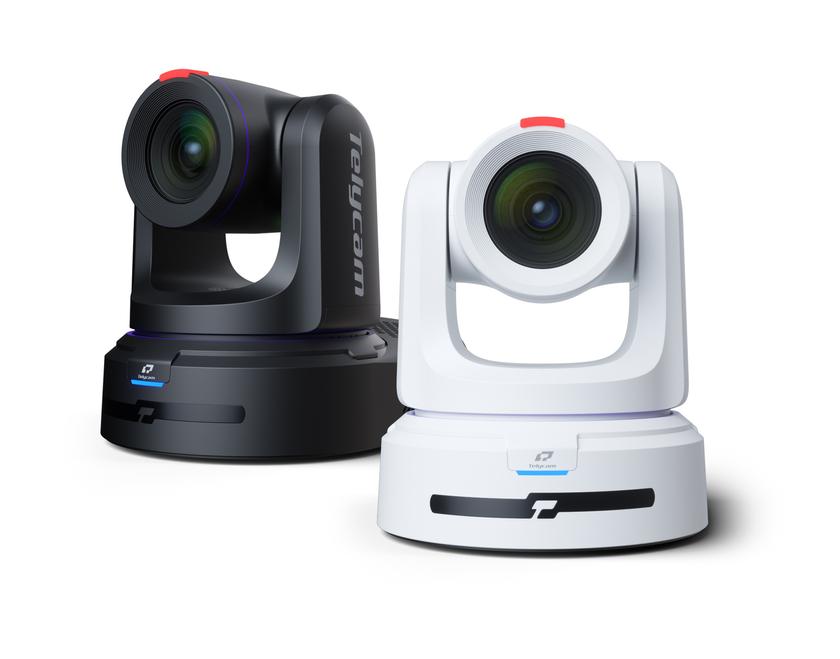Solid-state and optical recording: Is videotape dead?
For 50 years, videotape has been the mainstay of television recording. It has developed into a compact and versatile medium for capture, distribution and archive. Yet it is not without its disadvantages. Tape is a linear medium, which is a big drawback for editing. Tape has a life of around 25 years — too short for the archivist.
As the VHS and compact cassette fade into memory, the consumer has adopted several different media from recordable DVD to Flash memory for music and still cameras. Hard drives continue to get smaller and feature higher capacities. These consumer technologies are starting to find their way into professional recording.
The broadcaster has requirements that differ from the consumer. Less data compression is used, so files are much larger, and data transfer rates are much higher. The media has to be more rugged to stand up to use in the field, especially for applications such as news.
Some consumers may want to store family anniversaries for a century, but they don't feel the same pressure to do so as the archivist. Programs from 50 years ago are assets that can be sold as entertainment or used as a historic record for documentaries. The cost of storage and preservation can be offset against their value when reused.
There are many alternatives to videotape. The hard drive has emerged as an alternate magnetic medium with applications beyond short-term storage for nonlinear editing and transmission servers. There is, of course, 35mm film, but that is not the only optical storage medium.
Over the last few years, several new developments in storage for acquisition and archive applications have emerged.
Acquisition
Sony has taken the optical route for acquisition with the XDCAM. Ikegami has adopted the NLT FieldPak, a family of hard drives that can record HD using the Avid DN×HD, with capacities up to 100GB and a promise of Flash memory in the same package. Panasonic chose the solid-state route with P2 Flash memory. The P2 format uses the PC card (PCMCIA) footprint and is clearly aimed at the laptop editing market. Current cards have a maximum capacity of 8GB with higher capacities on the roadmap. At NAB2006, new product releases and technology demonstrations proved that the search for tapeless recording is a hot topic.
Solid state
At IBC2005, Thomson Grass Valley announced the development of a new camcorder, the Infinity, which promised to be “IT-immersed.” When launched at NAB2006, the camera sported a high-performance removable disk drive and Flash memory. Both are capable of recording HD at 100Mb/s using the newly-developed JPEG 2000 codec. Cards can be hot-plugged, and the camera has a buffer memory that allows the user to swap media and keep shooting. The user can also record to external storage using the GigE port.
Unlike previous camcorders that use professional recording media, the Infinity can use media purchased from your local electronics store. Is that what you call democratizing HD production?
Infinity is not the first Grass valley camera to use Flash memory. The Viper camera can be used with the Venom FlashPack recorder with a 15-minute capacity for regular HD.
Flash memory
Flash memory has become ubiquitous in the form of the USB stick. Who uses a floppy disk today? Flash is the memory of choice for cellular phones, digital cameras and a host of other consumer applications. The consumer products use removable cards of several different families: Secure Digital (SD) and the similar MultiMediaCard (MMC), CompactFlash (CF), Memory Stick, xD-Picture Card and SmartMedia (SM). They are all physically different, although adaptors allow interchange between some types. The capacity varies, but some formats are available with 8GB capacity.
The advantages of solid-state storage are obvious: they have no problems with vibration, and they are a rugged and small medium that can stand a wide temperature range. You can even leave a shoot with the content in your wallet, although, this also means they are easy to lose. Their initial use for professional applications was to store set-ups. Panasonic camcorders use the SD card for presets, and Sony uses its Memory Stick for the same purpose.
What has changed this year is that the capacity and write speed of some products has reached the point where the cards can be used to store video. SanDisk is Grass Valley's partner in the development of video recording to Flash. SanDisk's Extreme III CompactFlash family has a minimum write and read speed of 20MB/s (160Mb/s) with capacities of 2GB, 4GB and 8GB. (8GB would provide more than 30 minutes of DV25 recording or about six minutes of HD.) The Infinity camera has two CompactFlash slots.
The original reprogrammable semiconductor memory was electrically erasable programmable read-only memory (EEPROM). Flash was developed from that, but with a more compact cell area, which meant a lower manufacturing cost. Flash erases in blocks rather than byte-by-byte, as is the case with EEPROM.
Flash is nonvolatile, so unlike conventional RAM, the information is stored when the power is removed. Flash has a limited number of write-erase cycles, but more than 1 million cycles is typical, so this won't affect broadcasters.
Panasonic took a different approach with P2. Rather than using consumer products, it packaged four SD cards into a PC card footprint, which achieves high transfer rates and has a card that can be plugged straight into a laptop for editing. The 8GB card can store 16 minutes of HD at 720p/25.
Optical
Sony has developed optical storage as a broadcast product, with the Professional Disc and the XDCAM family of camcorders. Based on Blu-ray DVD technology, the XDCAM now supports HD recording and is finding favor as a replacement for DVCAM.
The recently released HD version of XDCAM offers a choice of standard-definition DV25 capture or 1080i recording at selectable bit rates of 18Mb/s, 25Mb/s or 35Mb/s using MPEG-2 long GOP coding (compared with 25Mb/s for HDV videotape.) The line includes camcorders, a studio deck, a portable deck, an IEEE1394 drive for connection to nonlinear editors and a cart machine for playout applications.
To speed the workflow for applications such as newsgathering, the XDCAM cameras simultaneously record an MPEG-4 low-resolution proxy along with the broadcast-quality signal. This can be read at a high speed into an NLE to start offline editing immediately, without the delay of ingesting the broadcast-quality video signal.
Holography
Holography has always had a science fiction feel. The ability to capture objects in 3-D is fascinating, and many visual artists have used holograms in their work. Outside applications in art, holograms are mass-produced as part of the security features on credit cards, but for many, the goal has been to use holograms for mass storage of data.
Using the hologram to store large quantities of data has proved more difficult. There has been a long search for a suitable storage medium that meets the requirement of a commercial product that can challenge existing storage technologies.
Conventional DVD-style recording is limited in performance by basic physics. The recorders write serially to a track on the disk, and the minimum pit size is constrained by diffraction in the laser beams. The DVD only uses the surface of the disk, whereas holography can use the full depth of the medium. Holographic recording can record millions of bits in parallel, potentially offering higher data transfer rates.
InPhase technologies, a spin-off of Bell Labs, has been working on holographic media and systems for seven years. This year, the fruition of the project was shown at NAB. Tapestry is a new storage medium that uses holography to write data to an optical disk. The product is in the final stages of integration and testing. Tapestry is an OEM product, so it will be available from several regular drive and jukebox manufacturers.
Holographic storage
Holographic storage records an interference pattern between a modulated laser beam and a reference beam using a chemical reaction in a photopolymer. A spatial light modulator encodes an array of more than 1 million pixels. Hundreds of data pages can be recorded in the same location in the media, each with its own angular address. It takes about 2ms to expose one page. InPhase uses commercially available micromirrors and ferroelectric modulators, much the same as used in projection TVs, as light modulators.
To read data, the reference beam illuminates the medium, and a detector recovers the data page. The media does not move while data is recorded or recovered, unlike the DVD. Again, consumer technology has been leveraged to lower costs. The detectors are the same CMOS imagers as conventional digital cameras. The mechanism is not unlike a DVD, but the motor positions the disk instead of spinning it.
InPhase Tapestry
InPhase, in collaboration with Maxell, has developed a first-generation media, the Tapestry HDS300A. It has a capacity of 300GB (25 minutes of uncompressed HD) and a transfer rate of 160Mb/s. Once recorded, the medium has an archival life of more than 50 years, with no special temperature or humidity requirements. Compare that to the fading dyes of movie film or the 25-year life of videotape.
The cartridge is designed with the same footprint as existing magneto-optical media (M-O), which means that current M-O jukeboxes can be used with the new holographic media without design change. The drive is compatible with existing tape or optical drives, offering SCSI and Fibre Channel interfaces as well as Ethernet. In fact, compared to an NLE, it just looks like a mounted drive.
The roadmap for future development promises third-generation products by the end of the decade with a 1.6TB capacity and 960Mb/s transfer rates.
Turner Broadcasting has already conducted trials with Tapestry, and several broadcast storage vendors are working with InPhase, including EMC (Avalon), Front Porch Digital, Masstech and SGL.
Advantages
For acquisition, one of the great advantages of the new media formats is that you don't need an expensive VTR to ingest video into an NLE. The drives for the new media typically cost less than €1000. The drives don't require the expensive maintenance of VTRs and tend to have low-cost FireWire or Ethernet interfaces. Because the new camcorders record video as MXF files, they can be imported directly to an editor. It's no longer necessary to use a video card to convert SDI or analog video to computer file formats. The new media typically have faster-than-real-time read rates, so content can be ingested at a high speed, a great boon for newsgathering. And for long-form editing, it can cut out the overnight digitizing before a session starts.
For the archive, the new media have several advantages, one of the most important being long life — at least twice that of magnetic tape. Unlike data tape, Tapestry has random access. This means that content can be read back much faster than any tape format, the limiting factor being the time to load a cartridge to the drive.
Is videotape dead? Sony's most advanced videotape format HDCAM SR can record at 440Mb/s, and the longest cassette can hold about 500GB of data, so the alternatives still have a way to go to catch up. Each medium has advantages and disadvantages, but we do have choices.
Get the TV Tech Newsletter
The professional video industry's #1 source for news, trends and product and tech information. Sign up below.













